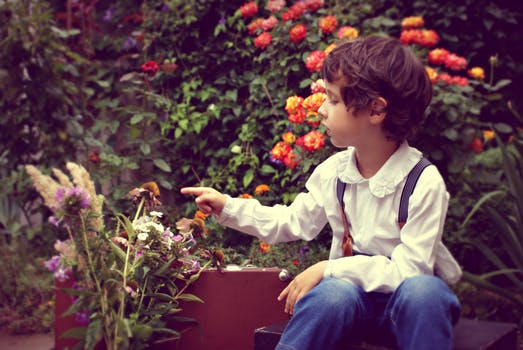Many parents know it’s important to baby-proof their homes, but most forget to look at their outdoor plants. And although most young children know to stay away from poison ivy, there are many plants that cause allergic reactions or can poison children. Protecting your child from poisonous plants isn’t difficult if you know what to look for in your yard and garden.
Protecting Your Child from Poisonous Plants: How to Get Started
The best home and garden safety tip is to identify any existing plants in your home or yard. So take special care to only plant child-friendly plants in areas that your children access. And remove highly toxic plants such as Angel’s Trumpet Trees when you have small children. Protecting your child from poisonous plants means being aware of what’s growing in your yard and garden.
According to a report by aboutkidshealth.com, it’s important to call a local poison center immediately if you suspect your child consumed a poisonous wild mushroom, plant, berry, seed or flower. Also, let officials know your child’s age, symptoms and how recently they touched or consumed the plant. And if you know what part of the plant your child ate, that helps since sometimes it’s the leaves and not the berries that are poisonous or vice versa.
Teaching Your Child About Plants
While you don’t want your child to feel afraid to eat plants, it’s important to talk about which plants are edible. One idea is to let your child help you plant an edible herb and flower garden. Explain how these plants feed people, but some plants are only food for wildlife.
For example, holly berries provide a great food source for birds, but they can poison humans. Also, teach your children to avoid sucking nectar from flowers that are not in the edible garden. Talking to your kids is one of the best ways for protecting your child from poisonous plants.
Labeling Indoor and Outdoor Plants
Also, it’s a good idea to label plants. For example, cactus plants cause skin irritation, while aloe plants health soothe the skin. So protecting your child from poisonous plants means keeping all harmful plants out of reach. But if you aren’t sure what’s poisonous, talk to your local extension office officials or local plant nursery.
And when planting poisonous plants, keep them behind a barrier so your children can’t reach them. Some of the poisonous plants that parents often avoid include:
- Arrowhead vine
- Black locust
- Chrysanthemum
- Daffodil
- Bittersweet
- Caladium
- Delphinium
- Amaryllis
- Azalea
- Boston ivy
- Castor bean
- Daisy
- Clematis
- Chinese lantern
- Rhubarb leaves
- Oleander
- Snow on the mountain
- Wisteria
- Virginia creeper
- Pokeweed
- Nightshade
- Mistletoe
- Lily-of-the-valley
In addition, protecting your child from poisonous plants is easy if you only plant safe ones. And some of the non-poisonous plants that make for a child-friendly flower bed include:
- African violet
- Alyssum
- Coral bells
- Jade plants
- Money plants
- Freesia
- Hoya
- Fuchsia
- Petunia
- Zinnia
- Easter lily
- Yucca
- Portulaca
For more home and garden tips regarding plants and child safety, talk to a local horticulturist. And if you feel worried about skin irritations, rashes, blisters or sudden illnesses after consuming wild berries, mushrooms or plants, contact a local poison control center or dial 911. Remember, protecting your child from poisonous plants is a family affair, so educate your children about them.

















